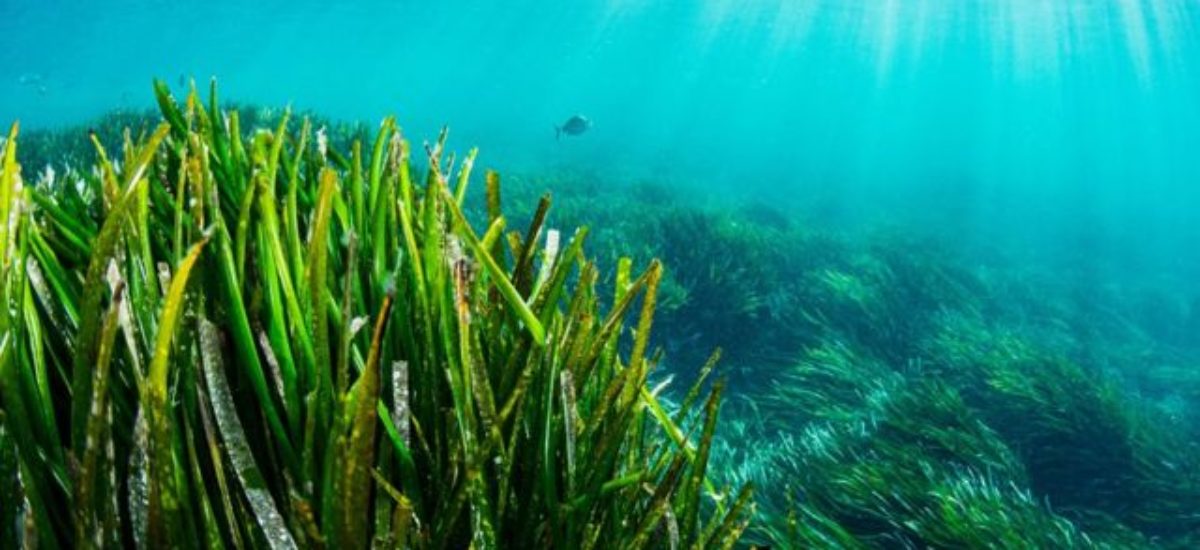Photo courtesy of BBC
Sri Lanka’s country statement to the 21st Conference of the Parties (known as COP21) to the 1992 United Nations Framework Convention on Climate Change held in Paris in 2015 stated, “We are aware of the great difference in carbon dioxide that is emitted from biological sources and carbon dioxide emitted from fossil sources. One has sequestered rates measured in thousands of years while the other in millions of years. Yet the cost is still the same. We would request the IPCC to address the relative costs of each.”
Carbon (C) – the fourth most abundant element in the universe, after hydrogen (H), helium (He) and oxygen (O) – is the building block of life. It’s the basic element that anchors all organic substances from fossil fuels to DNA. On earth, carbon cycles through the land, ocean, atmosphere and the earth’s interior in a major biogeochemical cycle (the circulation of chemical components through the biosphere from or to the lithosphere, atmosphere and hydrosphere). The global carbon cycle can be divided into two categories: the geological/ancient, which operates over large time scales (millions of years), and the biological/modern, which operates at shorter time scales (days to thousands of years).
The fossil carbon cycle
The operation of life has been clearly demonstrated to change the chemistry of that atmosphere to what it is today. One of the most active agents of this change were/are the oceanic plankton, photosynthetic microscopic phytoplankton that produce prodigious quantities of oxygen and biomass over time. Oxygen is released to the atmosphere and the biomass is consumed by respiring zooplankton (microscopic marine animals) within a matter of days or weeks. Only small amounts of residual carbon from these plankton settle out to the ocean bottom at any given time, but over long periods of time this process represents a significant removal of carbon from the atmosphere. This slow removal of carbon from the primary atmosphere into the fossil reservoir, while at the same time creating an atmospheric reservoir of oxygen, had a major effect on the maintenance of biotic homeostasis (any process that living things use to actively maintain fairly stable conditions necessary for survival.)
A similar process was repeated on the land especially at Devonian times with the huge vegetation mass that covered the earth absorbing carbon dioxide and then being mineralized in the lithosphere into coal, effectively removing that volume of carbon from earth’s atmosphere. The oxygen released by these early prodigious forests contributed greatly to the chemistry of the current atmosphere.
Life on earth learnt how to maintain gas and material flows optimum for the evolution of biodiversity. Carbon dioxide, although essential to the process of life, was being introduced into the atmosphere by volcanic processes at disruptive levels throughout geologic history. But the gas has not concentrated in the atmosphere because it was sequestered by living things and put away out of circulation from the biosphere of living carbon. This store of carbon was fossilized and has been slowly accumulating over the last few hundred million years.
Through these processes, which are still active today, carbon that enters the lithosphere is removed completely from the biological cycle and becomes mineralized into pools with ages of 100s of millions of years.
The modern (biotic) carbon cycle
The major exchange of carbon with the atmosphere results from photosynthesis and respiration. During the daytime in the growing season, leaves absorb sunlight and take up carbon dioxide from the atmosphere. In the oceans the planktonic cycle operate a similar photosynthetic cycle. Both create biomass. In parallel, plants, animals and substrate microbes consume this carbon as organic matter, transform it in the process of respiration and finally return it as carbon dioxide to the atmosphere.
The global impact of active photosynthetic biomass can be illustrated by the volume of water released into the atmosphere as water vapour. At a water release rate of 100:1 where over 100 molecules of water are released for each molecule of carbon dioxide absorbed by the leaf. The quantity of water cleaned and released annually into the atmosphere by vegetation is between 5,640-6,280 billion tons.
In the course of an year, these biological fluxes of carbon cycle over ten times the amount of carbon that is introduced to the atmosphere by fossil fuel burning. The atmospheric carbon belongs to the Global Ecosystem or the Global Commons and has it has a very significant chemical signature and the cycling movement of biotic carbon happens in cycles of a few days to thousands of years, but always maintain the same isotope ratio.
It is clear that fossil carbon and biotic carbon have extremely different sinks and need to be valued differentially when considering the impact on the global biosphere; it is the post industrial burning of fossil carbon that introduces an increasing increment of “new” carbon into the atmosphere.
The current rush to fix the carbon released from burning fossil fuels by planting trees is a non starter. Digging out and burning a hundred million year old carbon and putting it into a tree with a hundred year life, is not locking it up.
A clear distinction between fossil and biotic energy and a placing of differential values on the two sources will go a long way to expose these addicted economies and assist “developing nations” to avoid the pitfalls. The “fossil subsidy” including the fossil cost of cement production and use required for the creation and operation of future “development” projects should become cost criteria for acceptance or rejection of future “development” projects.
This is part three of a four part series ‘Development or Survival’ to read parts one, two, and four, see below.
Part one – The Lessons not Learnt
Part two – The Heat is Killing
Part four – Why We Need Trees


